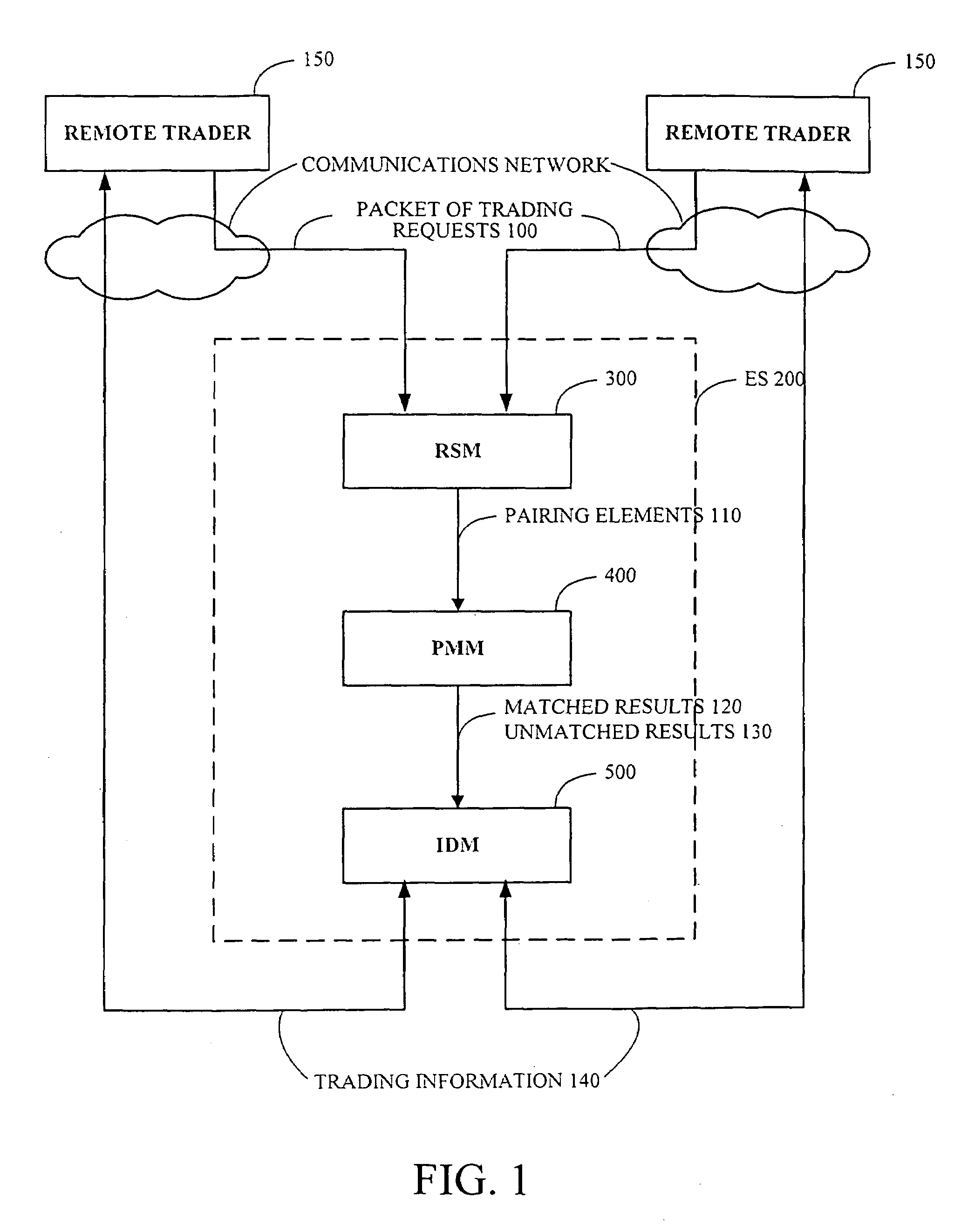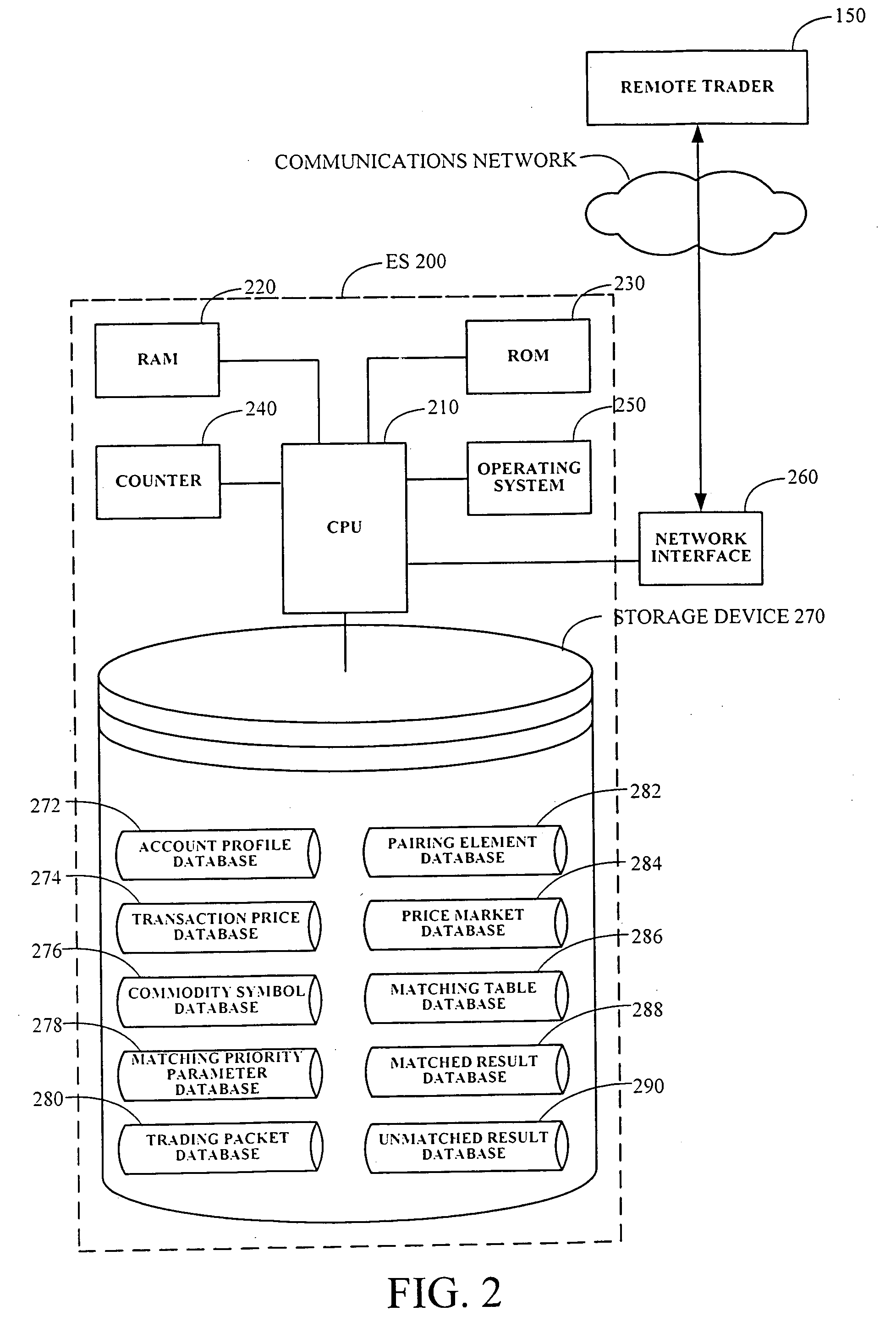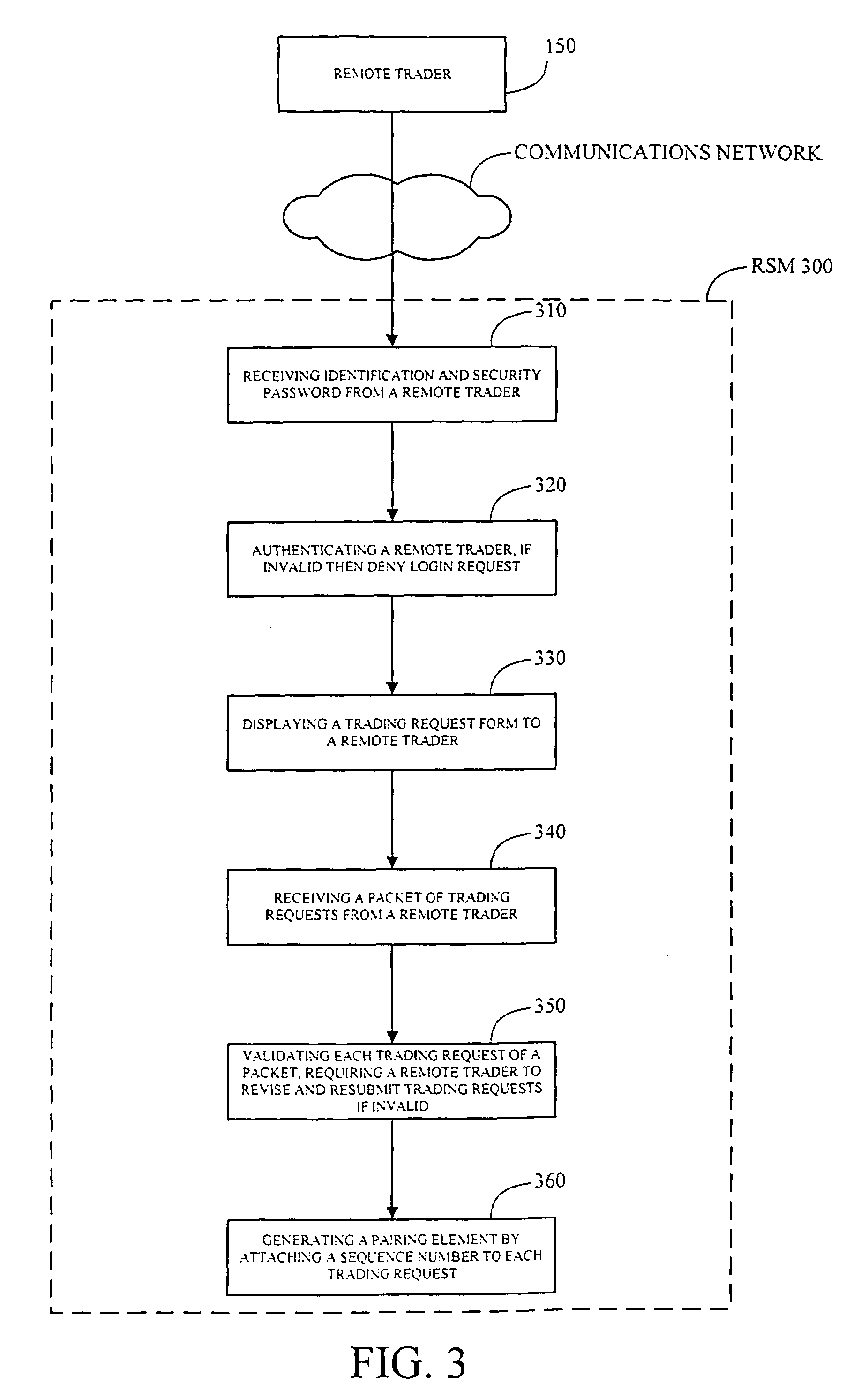Method and system to effectuate multiple transaction prices for a commodity
- Summary
- Abstract
- Description
- Claims
- Application Information
AI Technical Summary
Benefits of technology
Problems solved by technology
Method used
Image
Examples
Embodiment Construction
[0038]The present invention relates to a method to effectuate multiple transaction prices for commodity trading and the system thereof using communications and computer network. A detailed description is provided below to indicate what the method and system essentially involve.
[0039]A remote trader 150 submits a packet of trading requests or an inquiry of trading information via a communications network to the ES 200, as shown in FIG. 1. After receiving the submitted request or inquiry, the ES 200 will respond automatically and start corresponding processing steps.
[0040]There can be many remote traders, though only two are shown in FIG. 1. Remote traders may use a personal computer and a modem, for example, to access a communications network. Other means for remote traders to access a communications network are possible, for instance, a computer with a network card and a router, or a wireless handset with WAP capability. By communications network it is meant to include World Wide We...
PUM
 Login to View More
Login to View More Abstract
Description
Claims
Application Information
 Login to View More
Login to View More - R&D
- Intellectual Property
- Life Sciences
- Materials
- Tech Scout
- Unparalleled Data Quality
- Higher Quality Content
- 60% Fewer Hallucinations
Browse by: Latest US Patents, China's latest patents, Technical Efficacy Thesaurus, Application Domain, Technology Topic, Popular Technical Reports.
© 2025 PatSnap. All rights reserved.Legal|Privacy policy|Modern Slavery Act Transparency Statement|Sitemap|About US| Contact US: help@patsnap.com



